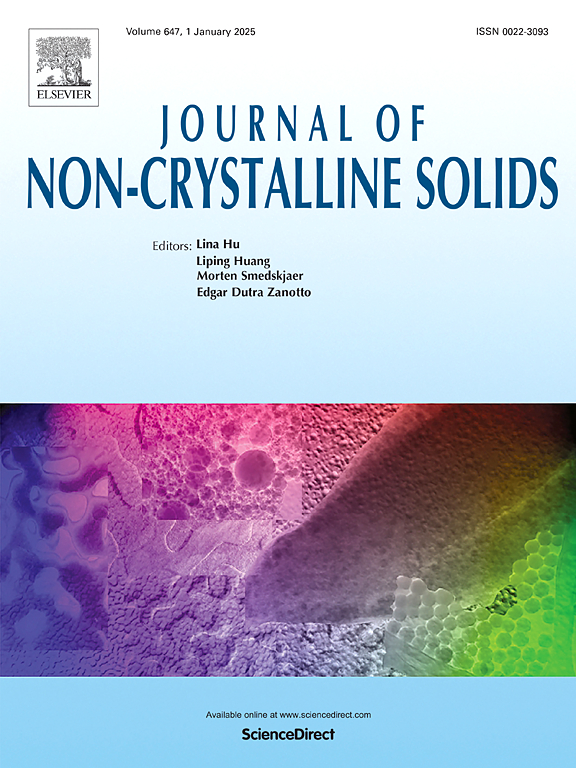用 C 取代 Cu 提高 FeSiBPCu 纳米晶合金的非晶形成能力
IF 3.5
3区 材料科学
Q1 MATERIALS SCIENCE, CERAMICS
引用次数: 0
摘要
本研究旨在提高 FeSiBPCu 纳米晶合金的非晶形成能力(AFA),并简化其工业化生产过程。我们研究了用 C 替代 C 的一系列 Fe85Si2B9P3Cu1-xCx (x = 0、0.3、0.5、0.7 和 1)的非晶形成能力和软磁特性。通过选择 480 °C 退火 330 秒(相当于第一和第二结晶温度之间的时间间隔),我们获得了具有细小尺寸的纳米晶相。退火后的 Fe85Si2B9P3Cu1-xCx 合金显示出晶粒尺寸和矫顽力(Hc)的增加。值得注意的是,Fe85Si2B9P3Cu0.7C0.3 纳米晶带具有 1.8 T 的高饱和磁化强度(Bs)和 9.8 A/m 的低 Hc,表现出优异的软磁特性和较低的生产工艺要求,具有巨大的应用潜力。本文章由计算机程序翻译,如有差异,请以英文原文为准。
Improving the amorphous forming ability of FeSiBPCu nanocrystalline alloys by substituting Cu with C
This study aims to improve the amorphous forming ability (AFA) of FeSiBPCu nanocrystalline alloys and simplify their industrial production process. We investigated the AFA and soft magnetic properties of a series of Fe85Si2B9P3Cu1-xCx (x = 0, 0.3, 0.5, 0.7 and 1) by substituting for Cu with C. The results show that the substitution method significantly reduces the preparation requirements for producing of amorphous alloys in the quenched state. By selecting an annealing of 480 °C for 330 s, which corresponds to the interval between the first and second crystallization temperatures, we achieved nanocrystalline phases with fine sizes. The annealed Fe85Si2B9P3Cu1-xCx alloy exhibits an increase in grain size and coercivity (Hc). Notably, the Fe85Si2B9P3Cu0.7C0.3 nanocrystalline ribbons with high saturation magnetization strength (Bs) of 1.8 T and low Hc of 9.8 A/m demonstrate excellent soft magnetic properties and low production process requirements, indicating significant potential applications.
求助全文
通过发布文献求助,成功后即可免费获取论文全文。
去求助
来源期刊

Journal of Non-crystalline Solids
工程技术-材料科学:硅酸盐
CiteScore
6.50
自引率
11.40%
发文量
576
审稿时长
35 days
期刊介绍:
The Journal of Non-Crystalline Solids publishes review articles, research papers, and Letters to the Editor on amorphous and glassy materials, including inorganic, organic, polymeric, hybrid and metallic systems. Papers on partially glassy materials, such as glass-ceramics and glass-matrix composites, and papers involving the liquid state are also included in so far as the properties of the liquid are relevant for the formation of the solid.
In all cases the papers must demonstrate both novelty and importance to the field, by way of significant advances in understanding or application of non-crystalline solids; in the case of Letters, a compelling case must also be made for expedited handling.
 求助内容:
求助内容: 应助结果提醒方式:
应助结果提醒方式:


